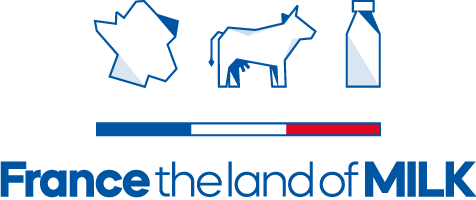Responsible production performance
Food consumption is changing, the status of livestock has changed in the Civil Code and the living conditions of some dairy or slaughter animals has come under question. Society wants answers and reassurance about animal welfare and CO2 emissions

What we're proud of
Animal welfare
Animal welfare has always been part of a dairy farmer’s profession. Without naming it, without defining it, through their movements, practices and observations, farmers are concerned with the comfort and health of their herd, every day. It is part of their responsibility as a farmer and a guarantee of high-quality milk production.
Animal welfare also contributes to the competitive edge of dairy farms. The dairy farmer is always adapting his or her practices in line with new technical and scientific knowledge. The 1969 Godefroy Law with a qualitybased payment system for milk is a good illustration. Over the last years, Cniel has initiated several projects with this in mind: national plan to prevent and reduce mastitis in dairy farms, reference website for lameness, technical references for ventilating farm buildings in the summer and more.
At the same time, people are becoming more aware. Food consumption is changing, the status of livestock has changed in the Civil Code and the living conditions of some dairy or slaughter animals has come under question. Society wants answers and reassurance about animal welfare.
Protect the environment
From the Channel coast to the Alps and the plains of the Loire, every French region boasts very different dairy landscapes. The diversity of French dairy products and the unique character of our industry are the result of these varying terroirs. These territories make France an exceptionally rich country for dairy farming which must be preserved. A cow raised in France means fields, pastures and hedges are maintained, biodiversity is preserved, carbon is stored in the soil…
Aware of its impact on climate change caused by greenhouse gas emissions (studied in the Climalait programme), the industry is determined to promote its advantages (storage, biodiversity, etc.). Industry stakeholders want to contribute to collective efforts to fight climate change and are working to reduce their carbon footprint.
Our aims for tomorrow
Animal welfare
Conscious of this need, the industry is committed to providing measurable indicators to assess the level of wellbeing of the dairy herd and establish a usable assessment method in all of France’s dairy farms. The indicators selected by the dairy industry are the result of over two years of debate, the fruit of a continuous progress and collective construction initiative involving representatives from all professionals in the industry (dairy farmers, cooperatives and private industrial companies). 16 indicators were defined to assess the welfare of dairy herds. These indicators correspond to the principles defined by the World Organization for Animal Health, and to the 5 fundamental freedoms, and are (as far as possible) focused on the animal, are of technical and economic interest to dairy farms, are easy to repeat, measure and observe. By 2025, 100% of French dairy farms will be assessed, to help continuously improve practices.
Protect the environment
As part of their climate roadmap, industry stakeholders are committed to reducing their carbon footprint by 17% per liter of milk from the factory. The industry has already reduced its carbon footprint by 24% between 1990 and 2010.
Assess dairy herd welfare
Promote low-carbon dairy farms
Monetize the efforts of CO2 emission reduction
 繁體中文
繁體中文  简体中文
简体中文  한국어
한국어  Français
Français 



